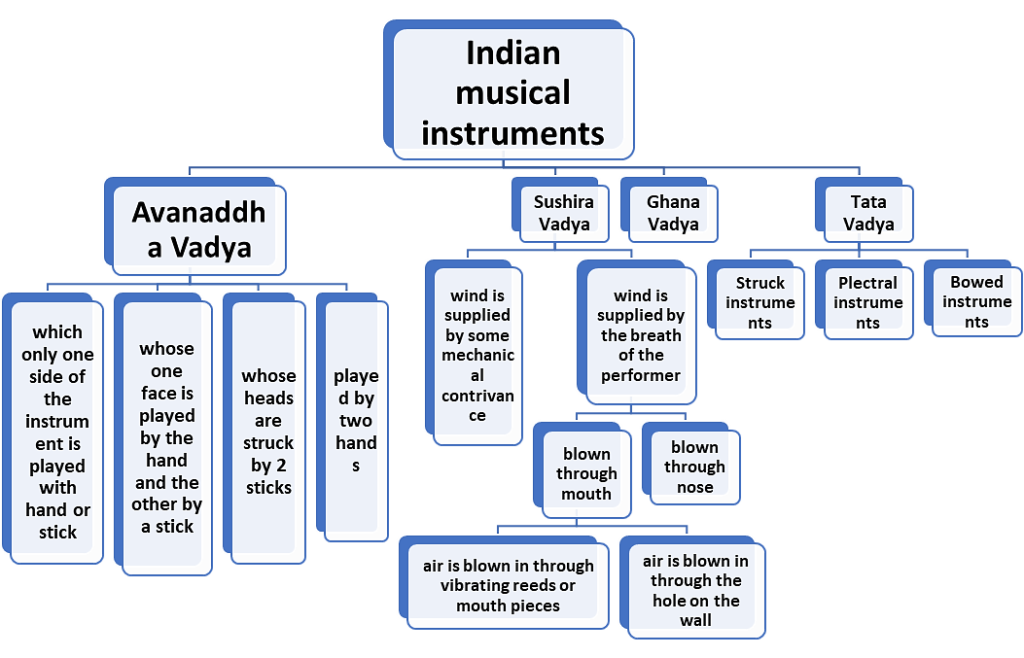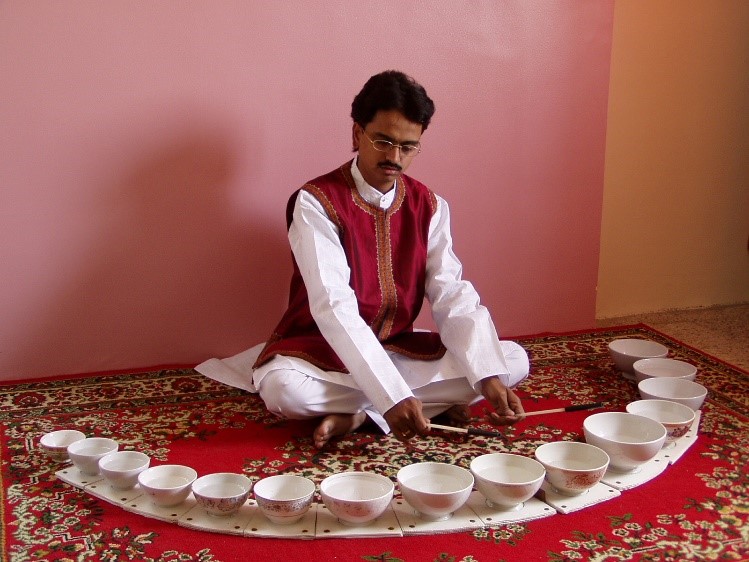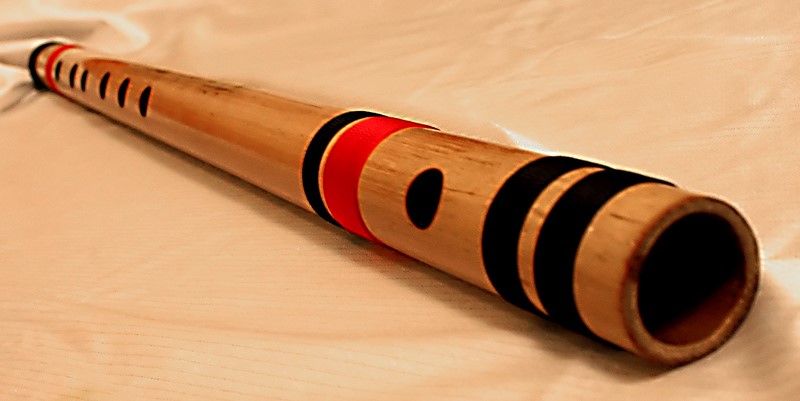Indian musical instruments have originated before the Vedic period with Hindustani music and Carnatic music choosing their own set of instruments. In this article, you will learn history, characteristics, kinds of Indian musical instruments for Indian musical instruments, Indian musical instruments and their uses, providing key insights for GS Paper-I Art and Culture section of UPSC IAS Exam.
Table of Content
- History of Indian musical instruments
- Background of Indian musical instruments
- Characteristics of Indian musical instruments
- List of Indian music instruments
- Types of Indian musical instruments
- Awanad/Avanaddha Vadya
- Sushira Vadya
- Ghana Vadya
- Tata Vadya
- Indian folk music instruments
- Conclusion
- Frequently Asked Questions
History of Indian musical instruments:
- Musical instruments originated in India before the Vedic period i.e., 4th Cent. B.C.
- Indian classical music instruments like Veena, Violin, Tanpura, and Drums were common amongst the royal people whereas simpler instruments such as Tuntina, Ektar, flutes, and basic drums were famous amongst the commoners.
- Indian music intertwines with ancient texts like Puranas, and its instruments are often connected to gods, goddesses, and semi–divine figures of Indian culture.
- Indian traditional musical instruments such as Veena, Venu, and Mridangam are associated with Goddess Saraswati.
- Indian classical musical instruments such as 7-holed flute and Ravanahatha were found from the sites of Indus Valley Civilization.
- The Indian musical instruments flute and Dundubhi has been used since the Vedic period.
- Many of the Indian traditional music instruments have evolved to include intricate embellishments on each note that might be influenced by the growing importance of Gamaka in Indian music.
- Gamaka is any graceful touch given to a single note or a group of notes.
- This preference for Gamaka led to the decline of ancient Indian musical instruments such as Yazh and various types of harps.
- Keyed instruments such as Piano, Harmonium, and Clarinet failed to gain popularity in India due to the same reasons.
Characteristics of Indian musical instruments:
- India has numerous musical instruments, including those from the stringed, wind, and percussion groups made from materials such as wood, bamboo, metal, and mud.
- Each Indian music instruments possesses a unique shape, tone quality, and playing technique.
- Pakhavaj Indian musical instruments are one of the most commonly used instruments in Hindustani music.
- Tabla Indian musical instruments came later than Mridangam.
- Only the Gamaka and quarter tones can truly evoke the essence of raga bhava in Indian music.
- South Indian music instruments: Mridangam, Veena, Ghatam, Kanjira, Violin, Uddukai etc.
- Hindustani music instruments: Tabla, Pakhavaj, Tanpura, Harmonium, Sarangi, Sitar etc.
- Classification: Avanaddha Vadya; Sushira Vadya; Ghana Vadya and Tata Vadya.
Violin Indian musical instruments:
List of Indian music instruments:

Types of Indian musical instruments:

Awanad/Avanaddha Vadya:
- Avanaddha Vadya instruments are classified as membranophones.
- Avanaddha Vadya possess an outer membrane that produces specific musical sounds when struck.
- Avanaddha Vadya are also known as percussion instruments as they require striking to create music.
- Avanaddha Vadya have one or two surfaces are covered with stretched skin.
- Avanaddha Vadya are used to regulate the speed of the music.
- Bhumi Dundubhi, also known as the earth drum, is the oldest in this category.
- Examples of Avanaddha Vadya: Tabla, Drum, Dhol, Congo, Mridangam etc.
- The Tabla is used in Hindustani music, while the Mridangam is used as South Indian musical instruments.
- Classification:
- Those played by two hands.
- Example: Mridangam.
- Those where the heads are struck by 2 sticks.
- Examples: Damaram, Nagara etc.
- Those in which one face is played by the hand and the other by a stick.
- Example: Thavil.
- Those in which only one side of the instrument is played with hand or stick.
- Examples: Khanjira, Timila, Edaikka and Chenta.
- Those played by two hands.
Jal Tarang Indian musical instrument:

Alt-text: indian musical instruments pictures
Sushira Vadya:
- Sushira Vadya instruments are classified as aerophones.
- Sushira Vadya includes all wind instruments.
- Examples of Sushira Vadya: Bansuri (flute), Shehnai, Pungi, Ninkirns etc.
- In some Sushira Vadya, the sruti is fixed to the instrument itself.
- Example: in Magudi, where there are 2 tubes, one for producing the sruti and the other for producing the melody.
- These tubes are known as sruti nadi and swara nadi.
- They are known as compound wind instruments.
- The Shehnai is a double reeded wind instrument with a widening tube at the end
- The Shehnai is one of the oldest wind instruments and most challenging to play.
- Prominent artist: Ustad Bismillah Khan was also known as the ‘Shehnai King‘.
- The Shehnai is one of the most famous Indian wedding music instrumental.
- The flute has been used since the Vedic period.
- The flute was initially called Nadi or Tunava.
- The flute gained reverence when the image of Lord Krishna playing the flute became an iconic symbol in Hindu culture.
- Prominent artist: Pandit Hariprasad Chaurasia.
- Classification:
- Those in which the wind is supplied by the breath of the performer.
- Examples: Flute, Nagaswaram, Kombu, Ekkalam, Conch, Magudi etc.
- Classification: blown through nose or mouth (air is blown in through the hole on the wall or through vibrating reeds or mouth pieces).
- Those in which the wind is supplied by some mechanical contrivance.
- Examples: Harmonium and Piano.
- Those in which the wind is supplied by the breath of the performer.
Flute:

Alt-text: Flute Indian music instruments
Ghana Vadya:
- Ghana Vadya instruments are classified as Idiophone instruments.
- Ghana Vadya comprises of non-drum percussion instruments that do not require tuning and are made up of metals or stone.
- Examples of Ghana Vady: Jalra, NattuvaTalam, Brahmatala, Manjira, Jaltarang, Kanch-tarang, Ghungroo, Ghatam (earthenware pot drum), Khartal etc.
- Jalra is used in bhajans and kalakshepams.
- Brahmatalams, which are larger in size, are used during temple rituals.
- Nattuva talam is used by the dance masters.
- Ilatalam is used by the kathakali dancers.
- The Manjira or Jhanj, is a small brass cymbal commonly used in religious ceremonies.
- It has its origin since the ancient Harappan Civilization.
Ilatalam:

Alt-text: Ilatalam
Tata Vadya:
- Tata Vadya instruments are classified as Chordophones.
- Tata Vadyas belong to the category of string instruments that produce sound through manual modifications.
- Classification:
- Bowed instruments: creates sound by drawing a bow across the strings.
- Examples: Sarangi, Esraj/Dilruba, Violin etc.
- Plectral instruments: strings are plucked by the fingers or a plectrum made of wire or horn.
- Examples: Sitar, Veena, Tanpura, Guitar etc.
- Struck instruments: sound is produced by striking them with a small hammer or a pair of sticks.
- Examples: Gotuvadyam and Swaramandal.
- Bowed instruments: creates sound by drawing a bow across the strings.
- The Bhangash family was the pioneer of the Sarod in the 20th century.
- Sitar Indian musical instruments has distinct Gharanas such as Jaipur, Varanasi, Etawah (Imaad Khani) Gharanas.
- The Veena is an ancient instrument associated with Goddess Saraswati belongs to this category of musical instruments.
Veena:

Alt-text: Veena Indian musical instruments
Indian folk music instruments:
Chordophones:
- Tumbi: It is played during Bhangra in Punjab.
- Ektara or Tun Tuna: It is a one-stringed instrument played by wandering monks.
- Dotara: two-stringed instrument played by Bauls.
- Chikara: bowed instrument played in Rajasthan, Uttar Pradesh and Madhya Pradesh.
- Dilruba or Esraj: accompanying instrument played in Punjab and during Rabindra sangeet in Eastern India.
- Onavillu: played in Kerala and are made of bamboo.
- Sarinda: is Sarangi like tribal instrument played by Santhals in Eastern India and in Rajasthan and Assam.
Aerophones:
- Pungi or Been: played by snake charmers and are made up of dried bottle gourd and 2 bamboo sticks.
- Algoza: is a double flute and played in North West India, especially Punjab.
- Tangmuri: is a folk instrument of Khasi hill people of Meghalaya.
- Titti: is like a bagpiper, made of goat skin.
- It is made in South India– Kerala and Andhra Pradesh.
- Mashak: is played in Garhwal region in Uttarakhand, Rajasthan and Uttar Pradesh.
- Gogona: is made up of bamboo and played during Bihu festival in Assam.
Membranophones:
- Ghumot: is drum like instrument played during Ganesh festival in Goa.
- Idakka: is drum like instrument played in Kerala.
- Udukai: is hour-glass shaped instrument like damru from Tamil Nadu.
- Sambal: is drum like instrument played with sticks in Konkan region of Maharashtra.
- Tamak: is a two headed drum played by Santhal tribe and beaten with drum sticks.
- Diggi: is a folk drum played in Ghariya village of Uttar Pradesh.
Idiophones:
- Chimta: evolved from fire tongs and played in Punjab.
- Gharha: earthern pots and played in folk music of Punjab
- Andelu: is a pair of hollow metal rings played during Burra-Katha.
Conclusion
All Indian musical instruments hold a connection to celestial characters found in the Puranas, thus each instrument is seen as a gift of God and are revered for this reason. Stringed and wind instruments produce melodious music, while the Avanadha and Ghana instruments provide rhythmic accompaniment to both instrumental and vocal performances. Unlike other musical styles, Indian music maintains a consistent frequency throughout a concert
| Other Articles in History & Culture | |
| Nagara Style Temple | Martial Arts of India |
| Dravida Temple Style (South Indian temple style) | Industrial Revolution |
| Tribes in India | Classical Sanskrit Theatre |
FAQs (Frequently Asked Questions)
When did musical instruments originated in India?
Musical instruments originated in India before the Vedic period i.e., 4th Cent. B.C.
What are the various classifications of musical instruments in India?
Awanad/Avanaddha Vadya (membranophones); Sushira Vadya (aerophones); Ghana Vadya (Idiophone) and Tata Vadya (Chordophones).
What are some examples of Folk musical instruments?
Sarinda; Chikara; Dilruba or Esraj; Tangmuri; Been; Sambal; Chimta etc.
What are the five Indian musical instruments?
The 5 Indian musical instruments are Veena, Violin, Tanpura, Mridangam and Drums.
What are the top 10 musical instruments in India?
Instruments most commonly used in Hindustani classical music are the sitar, sarod, tambura, sahnai, sarangi, and tabla; whereas instruments commonly used in Karnatak classical music include the vina, mrdangam, kanjira, and vi



